Oysters with Cilantro and Cucumber Salsa
I’ll admit up front: I’m not much of an oyster guy. I will eat them if served to me at a party, but I usually don’t seek them out for myself. I do, however, enjoy shucking oysters for others and watching them enjoy eating those briny sea creatures fresh from their shells.
I think it’s because shucking oysters is something that I’m good at and it’s something that requires concentration, technique and well-applied force. I’m not sure what that says about my personality…that I would enjoy making a dish for others when I don’t particularly care for it myself.
Oysters are one of those sea creatures that are found in many parts of the world. I remember seeing them as a child in Thailand and Singapore. Here in the U.S., most of the oysters come from the Gulf of Mexico. Unfortunately, because of the oil spill, those oyster grounds are closed to harvest. Luckily, here in the Pacific Northwest, oysters are still plentiful. They’re smaller than their Gulf Coast cousins, with Kumamotos being one of the most widely available. In Oregon, oysters are cultivated in Netarts Bay and Yaquina Bay. But the number of oysters cultivated in Oregon is dwarfed by the oysters cultivated in Puget Sound in Washington, as well as those cultivated around Vancouver Island in British Columbia.
When purchasing live oysters to serve on the half shell, go to a fishmonger or grocer you trust. You can tell that they know what they’re doing if they check the shells to make sure that they’re tightly closed and knock them against each other or a hard surface to make sure they don’t sound hollow before putting them in a bag along with some ice in a separate bag. (Loose shells and hollow sounds mean that the oyster is dead.)
Everyone has their own technique for shucking oysters. I always wear a heavy rubber glove on my left hand, just in case my oyster knife goes amiss of its intended target. Always use an oyster knife; do not attempt to shuck an oyster with a regular kitchen knife. You’ll end up destroying it, not to mention possibly slicing off your finger. Oyster knives do not have a sharp blade; instead, they are very strong with a rounded tip and a large sturdy handle.
I always start by examining the oyster and finding the point in its triangular shape where the hinge is located. I then firmly grasp the oyster with my gloved left hand and, holding the oyster knife in my right, gently rock the curved point of the knife back and forth in a crevice in the hinge until the oyster begins to release its grip, and the pressure of the knife begins to separate the shells. I then force the knife in about ¼ to ½ an inch and assert enough pressure while twisting the blade to pry apart the shells. When the shells pop apart a little, I run the blade down each side of the shell to sever the muscle that holds the shells together. When that’s accomplished, I simply lift off the top shell and scrape the oyster away from its muscle using the oyster knife. This makes it easier for diners to slide those delicious creatures off their shells and down their throats.
Always wear a glove. Start by finding the point of the triangular shape of the oyster where the hinge is.
Firmly grasp the oyster with your gloved hand and, holding the oyster knife in your other hand, gently rock the curved point of the knife back and forth in a crevice in the hinge until the oyster begins to release its grip, and the pressure of the knife begins to separate the shells.
Then force the knife in about ¼ to ½ an inch and assert enough pressure while twisting the blade to pry apart the shells.
Scrape the oyster away from its muscle by running the oyster knife along the smooth surface of the inside of the shell. This will free the oyster's body from the shell.
Most people squeeze lemon juice on oysters in the half shell and then dunk them in cocktail sauce or ground horseradish, but I’ve always enjoyed the fresh flavor of mirin and ponzu and was inspired by a recipe for cucumber salsa for oysters in chef Nobu Matsuhisa’s book Nobu West. I added a twist of my own and served them to Mom and Charles, who eagerly gulped down my test bivalves. I broke with my usual abstinence and ate one too.
Freshly shucked oysters served on a plate of crushed ice with cilantro and cucumber salsa make a wonderful summer appetizer.
Oysters with Cilantro and Cucumber Salsa
(This recipe will make enough salsa for you to enjoy with 3 or 4 oysters. Simply multiply if you are serving more.)
- 1 tablespoon (15 ml.) finely chopped cucumber (peeled)
- 1 tablespoon (15 ml.) finely chopped gari (pickled ginger usually served with sushi)
- 1 tablespoon (15 ml.) mirin
- 1 tablespoon (15 ml.) ponzu
- 1 teaspoon (5 ml.) finely chopped cilantro
- 1 teaspoon (5 ml.) toasted sesame oil
- Combine all ingredients in a small bowl.
- Shuck oysters and arrange them in a serving dish containing crushed ice.
- Top each oyster with a little of the cucumber salsa and some of the liquid.
You can garnish the plate with some daikon radish strips and gari to make a nice presentation.
Enjoy!
— Vic
Category: Appetizers, Seafood
About the Author (Author Profile)
Victor Panichkul is a journalist and writer by training; a cook, wine lover and photographer by passion; and a lover of the outdoors since moving to Oregon more than 10 years ago. He is a native of Bangkok, Thailand.








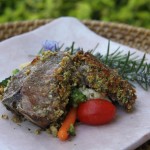




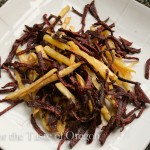


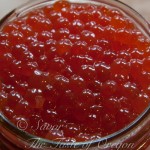




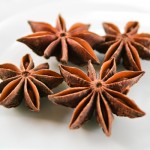







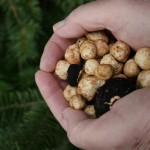




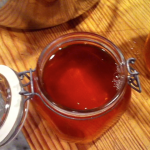











How good that sounds.
Marlene
Ok, you enjoy shucking them and I enjoy eating them (but can’t shuck to save my life). We should collaborate 🙂 Great recipe!
Will shuck for readers!
found your site on del.icio.us today and really liked it.. i bookmarked it and will be back to check it out some more later